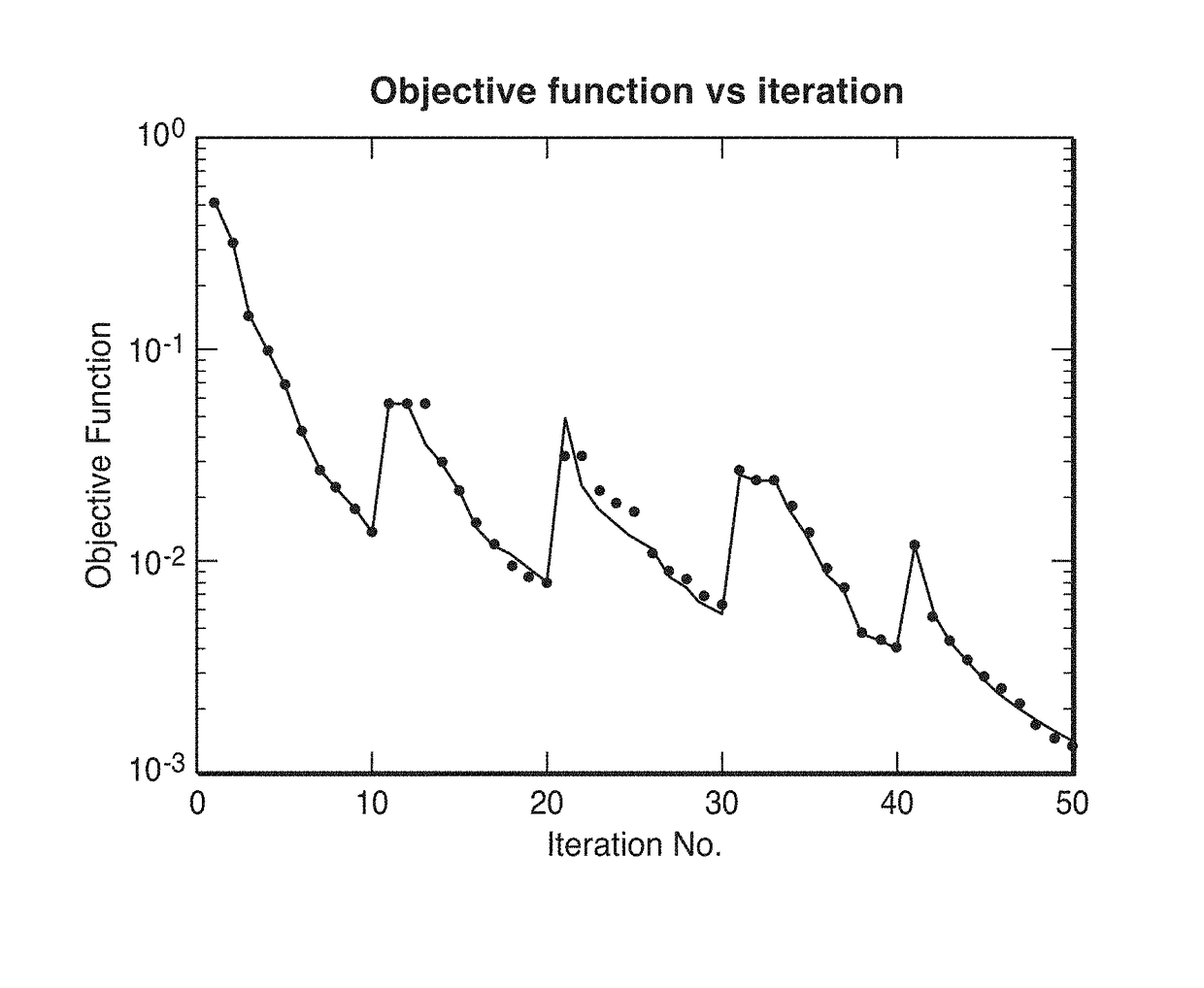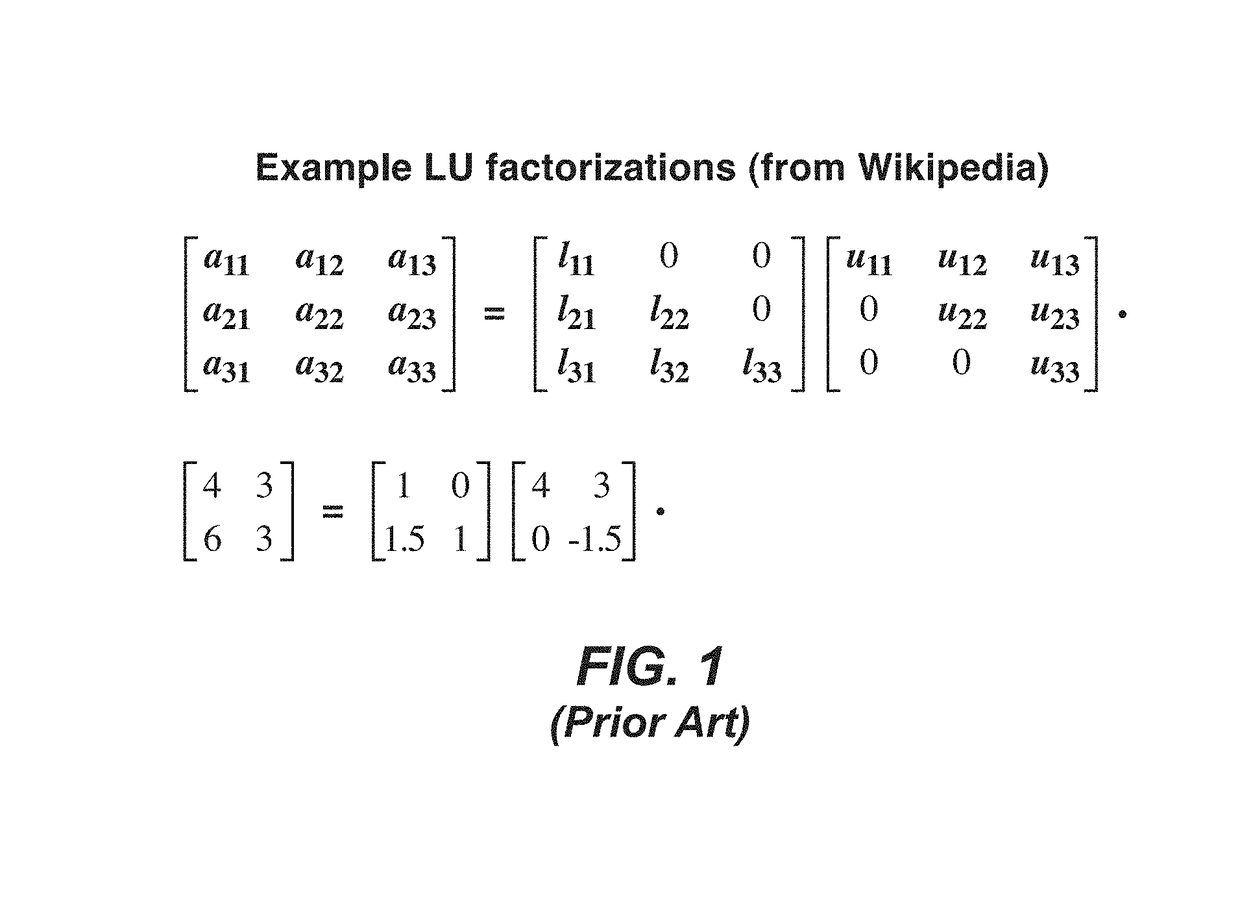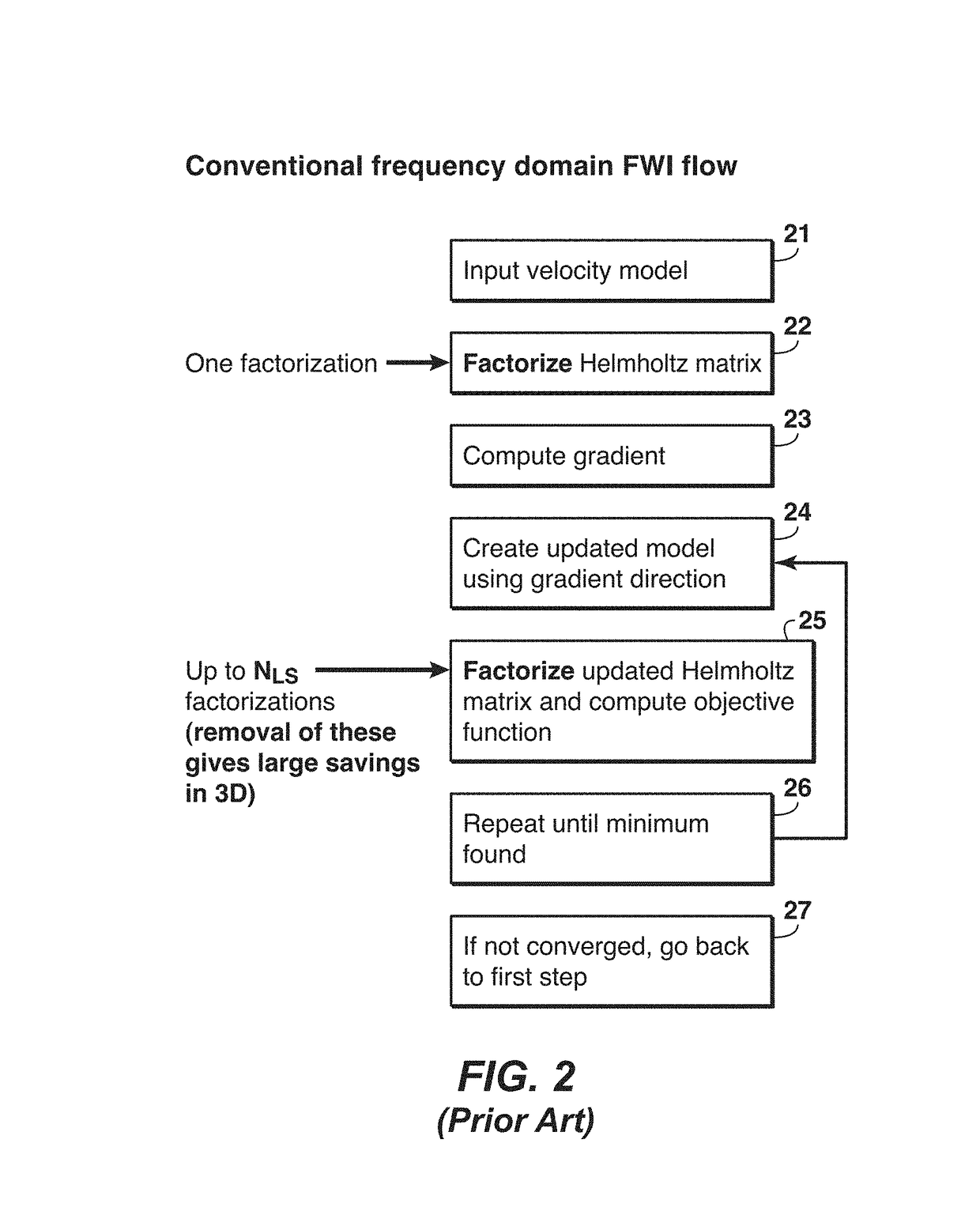Method for fast line search in frequency domain FWI
a frequency domain and line search technology, applied in the field of geophysical prospecting, can solve problems such as one-dimensional optimization problems, and achieve the effect of quick wavefield solving
- Summary
- Abstract
- Description
- Claims
- Application Information
AI Technical Summary
Benefits of technology
Problems solved by technology
Method used
Image
Examples
example application
[0053]As a test example for the present invention, a frequency-domain inversion was performed using a simple 2D velocity model based upon the SEAM model created by the Society of Exploration Geophysicists (see, for example, reference 8). For this example, the measured data are synthetic data generated using the SEAM model which therefore can be called the true model. FIG. 4 shows the true model of velocity as well as the initial model used to start the iterative inversion process. The horizontal and vertical axes represent horizontal and vertical subsurface spatial location in grid cells, with each grid cell measuring 6×6 m. The inversion is performed using five frequencies (3, 4.2, 6, 8.4 and 12 Hz) with 10 iterations at each frequency.
[0054]FIG. 5 shows the inverted values for VP. Note that the model contains absorption, i. e. there is a non-infinite Q model, but for simplicity it was set to its true value and not inverted for; however, it is included in the wave propagation via i...
PUM
 Login to View More
Login to View More Abstract
Description
Claims
Application Information
 Login to View More
Login to View More - R&D
- Intellectual Property
- Life Sciences
- Materials
- Tech Scout
- Unparalleled Data Quality
- Higher Quality Content
- 60% Fewer Hallucinations
Browse by: Latest US Patents, China's latest patents, Technical Efficacy Thesaurus, Application Domain, Technology Topic, Popular Technical Reports.
© 2025 PatSnap. All rights reserved.Legal|Privacy policy|Modern Slavery Act Transparency Statement|Sitemap|About US| Contact US: help@patsnap.com



